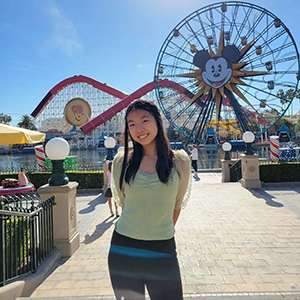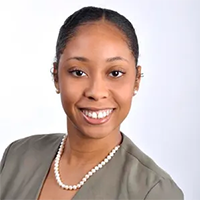Written by Myava Mitchell Contributor WETA/PBS Associate to Executive Producer, Thomas Chiodo.
May 24, 2023 / Forbes

MICHELLE SO
As we look at the impact on education, post-pandemic, we’ve sought out the student’s point of view. Michelle So, a junior from Temple City, CA, shared her experiences as part of the Student Journalism Challenge produced by PBS NewsHour Student Reporting Labs and powered by the XQ Institute.
How has climate change affected you and your community?
As a lifelong resident of Southern California, I’ve grown up only knowing life in limbo. With years-long stretches of historical droughts, water conservation has become deep-rooted into the culture. Five-minute showers are the standard. Years are dictated not by rainy months or brisk summers, but by lengthening mosquito seasons and air-quality advisories.
It’s a disappointing reality how anthropogenic global warming has affected our livelihoods. Every year I hope others will finally get the message. Yet, again and again, I am shaken by the disconnect between my peers and climate change. It’s a disconnect that, frankly, needs to end.
Ms. Neda Kuso (Arcadia High School, CA) has taught AP Environmental Science and chemistry honors for 15 years.
Her recent trip to the aquarium ended up a bittersweet after visiting the new coral exhibit, which had “a 3D projection of a coral reef, just so children would know how one feels,” she said, eyebrows raised in disbelief. “For me, that was kind of eye-opening because it was like, ‘Here, this is a playdough version of a coral reef because we aren’t going to have any anymore!”
What actions can be taken in the classroom to address global warming?
Because of global warming, corals are disappearing from their native range at an alarming rate. Like Ms. Kuso noted, unless measures are taken to remove greenhouse gasses, they might not exist in the next 30 years. It’s a stressful predicament for teens, made worse with the lack of knowledge and burden of expectations. However, some teachers like Ms. Kuso are working against the information deficit by incorporating supplemental yet memorable lessons on climate change into their curriculum.
“I actually go to restaurants and eat a bunch of oysters for the experiment,” she admitted. “Then in class, we mix up this super concentrated vinegar…and see the shells get smaller and smaller.”
These lessons aren’t just informative, but engage students to be more environmentally proactive. The demo displays effects of ocean acidification, reminding Ms. Kuso’s students how their actions on land can also impact lives beneath the surface.
How can the California education system address climate change?
However, she’s in the minority: a poll by NPR.org found that only 42% of teachers teach about climate change in their classrooms. The other 58% said climate change either didn’t pertain to their subjects or they didn’t know enough to teach it. It’s partly a partisan issue too: New Jersey, the only state to mandate climate curriculum, has uncoincidentally voted blue since 1992. Politics is one just one gap we must bridge in order to standardize climate curriculum in classrooms. Unless California follows suit, it will be up to individual teachers like Ms. Kuso to fill in the deficit.
With record heatwaves, disappearing coastal cities, and my future at stake, the fuse is burning short. As climate scientists, activists, and inventors-to-be, the foundation of a strong education is not optional, it is a necessity. California must implement climate change curriculum now, or never.
Follow me on LinkedIn.
About the Author

Myava Mitchell is an award-winning independent producer and entrepreneurial business leader with over 10 years of experience in television, production, and media.
Her expertise in research, communications, special events, creative, and screenwriting has translated to exceptional results for companies such as BET Networks (Viacom), Darius Films in Los Angeles, and Capital Concerts in Washington, DC. Currently, she serves as an Associate to Executive Producer, Thomas Chiodo, at WETA/PBS.
Myava has an M.F.A. in Film Production and Producing from Loyola Marymount University, and a B.A. in Mass Communication and Journalism from North Carolina Central University.
The Forbes.com Well Beings Blog is a series that addresses critical topics around the health, mental health, and well-being of America’s youth and adults. The blog launched in 2020 as a companion to the Well Beings Youth Mental Health Project and Ken Burns Presents Hiding in Plain Sight: Youth Mental Illness, A Film by Erik Ewers and Christopher Loren Ewers (PBS.org/plainsight |WellBeings.org/plainsight), which is now streaming on the PBS app. #WellBeings #WellBeingsLive
The current series of articles addresses creativity, resilience, and well-being among America’s youth. It is part of the Student Journalism Challenge produced by PBS NewsHour Student Reporting Labs and powered by the XQ Institute. The challenge celebrates young people’s creative expression, encouraging students ages 13-18 to tell their own stories of their communities and their education by contributing print, video, and audio pieces on the theme, “My Education, My Future.” Submissions were evaluated by a diverse roster of professional journalists.
The Forbes.com Well Beings Blog “Student Journalism Challenge” series features winning articles and honorable mentions in the print category.